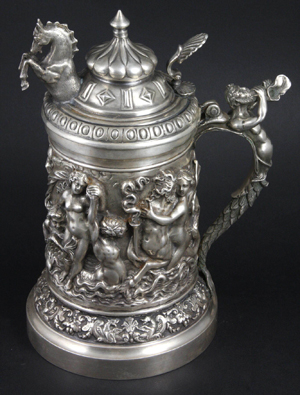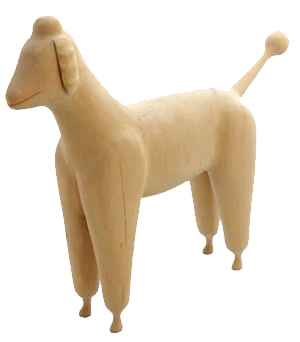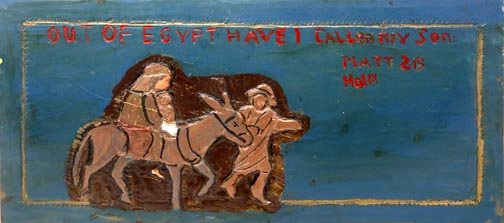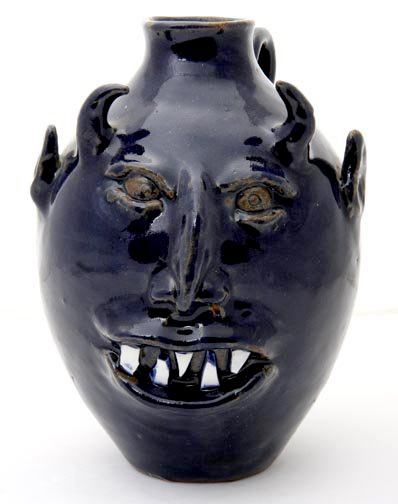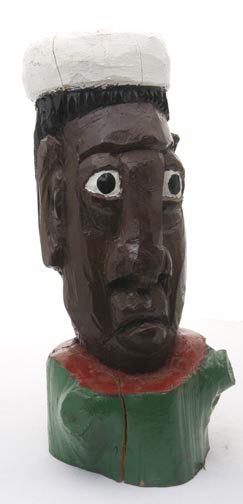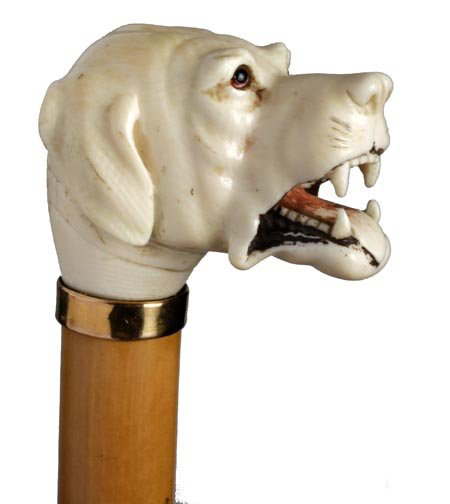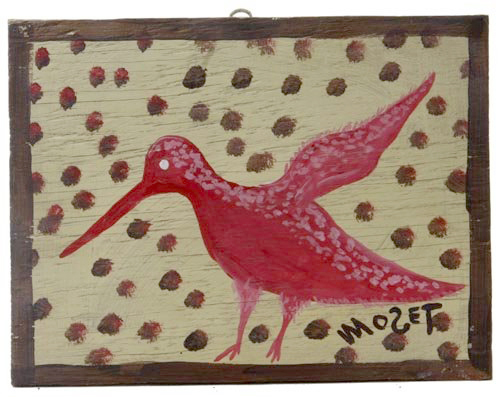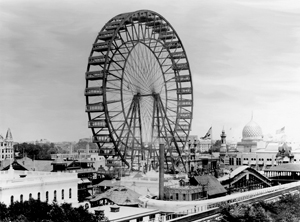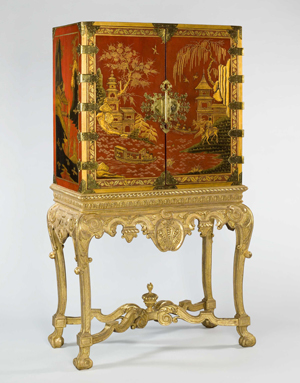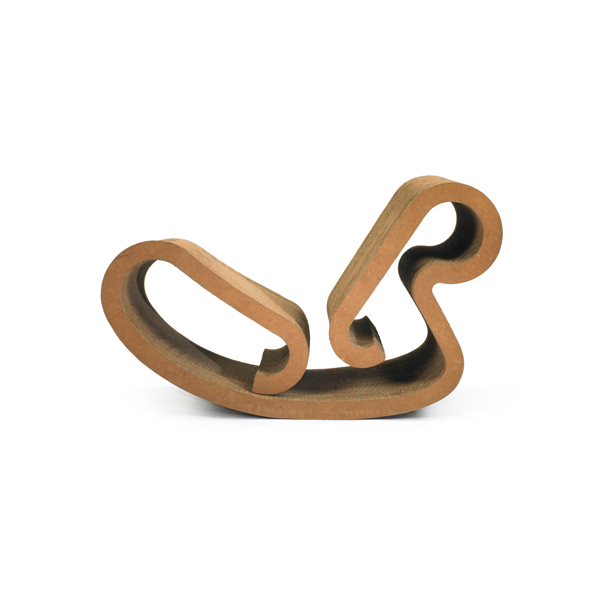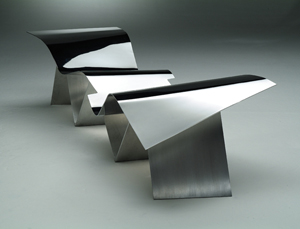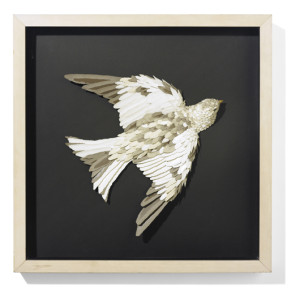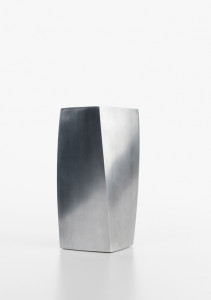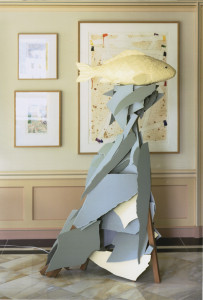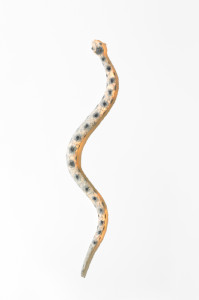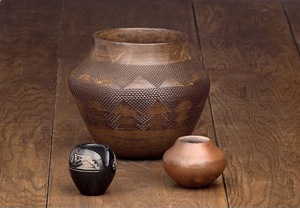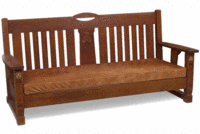LISBON, Conn. (AP) – Some young men were walking along a wooded bike path near the Quinebaug River when they found a black spearhead laying in the soil.
It looked like part of an American Indian weapon. So they asked Richard Rogers, who owns the land, if they could dig for more.
In two weekends, they found 80 spearheads in an area about the size of a small bedroom.
Rogers decided to see for himself. He and his son, now 22, walked through the woods, and brought a bucket of water to clean their discoveries. Near a stump by the river, Rogers picked up an oval stone a little larger than a silver dollar.
Something was carved in it, and he handed it to his son.
“He cleaned it up and said, ‘This is a face, Dad.'”
The stone was a rare pendant. They had stumbled upon an ancient American Indian encampment and part of a burial ground dated more than 3,000 years ago.
The state Office of Archaeology has excavated portions of the property and found hundreds of artifacts, from stone tools to evidence of a pit where cremated bodies were buried. Radiocarbon dating a method used to estimate the age of remains in an archaeological site places the time of two areas containing charcoal at 3,400 and 4,000 years ago.
Representatives of the Mohegan and Mashantucket Pequots tribes and the Native American Heritage Advisory Council have visited the site. The Archaeological Conservancy, a private, nonprofit organization that acquires and permanently preserves important archaeological sites across the United States, has looked at it. The conservancy publishes the quarterly magazine American Archaeology.
Andrew Stout, eastern regional director of the group, said the site has research potential and is eligible for the National Register of Historic Places.
“It’s a great property in that it is set aside from any major development,” he said. Stout researches sites on private property from Maine to North Carolina about 1,000 properties per year.
State Archaeologist Nicholas Bellantoni said the state has found many American Indian campsites, but few this large. The boundaries are unknown.
“We don’t have many that are intact,” he said. “Many have been disturbed by plowing. Many have had subdivisions been built on them, highways. Here is a parcel that has been untouched, and so the integrity of the place is really intact.”
He said the pendant is a rare find.
“There are very few, even in museum collections,” he said. “We don’t see it often. When I saw this, and all of the stone points they were getting here, I realized there is a lot here that could yield important activity in the past.”
The specific location of the dig is not being publicized because of potential unauthorized digging.
Rogers lives on 34 acres off the Quinebaug River.
When the water is low, the remains of a stone wall emerge. American Indians built fishing weirs in rivers, or stone walls in the shape of a V, to funnel fish. They would walk along the top of the weir where fish collected, then use spears or nets to catch them.
Rogers, who serves on the Board of Finance in Lisbon, installs and repairs power lines for Northeast Utilities. His grandmother gave him this land, and the property abuts fields. For as long as he can remember, every time his neighbors would plow, they’d find something.
But Rogers said he never thought much of it, until he discovered the stone with the face on it.
“Once we found that, I felt like we had something a little bit more there than just the regular Indian campground,” he said.
He called Jeffrey Bendremer, tribal archaeologist for the Mohegans. Rogers said he drove to the house the same afternoon.
The tribal council declined comment.
Rogers also brought the pieces to the University of Connecticut’s expo the same weekend. By Tuesday, he said, Bellantoni was on his property.
Bellantoni said it took a while to get a team to the property, but ultimately, he found about a dozen volunteers and students from UConn to work on the dig. The university offered an archaeological field school there in July 2007, organized by the Connecticut Museum of Natural History and Connecticut Archaeology Center.
They studied the land in 5-foot blocks. Archaeologists placed an imaginary checkerboard over the land, then dug in alternate squares, further dividing each square into 30-inch quarters.
“It’s a very slow and deliberate process that allows us to record and map every level that (every artifact) comes from,” Bellantoni said. “But that is the only way we can interpret the site.”
They used a global positioning system to set a position, then drove wooden pins in the ground to mark off where they’d been.
Rogers said they recorded every detail.
“They go in there with trowels and paint brushes and just scrape the surface,” Rogers said. “Every time they find something, they record how deep it was, where it was headed, where on the grid it was, which grid it was on. With these grids they can lay out exactly how big this village was and what was where. Everything is documented to a tee.”
During the dig, archaeologists found a black stain in the soil. They thought it was a hearth or small fireplace at first, but it grew larger as they dug deeper. They realized they had found a small deposit for cremated remains.
The burial is dated to more than 3,000 years ago, and was used as a ceremonial place by American Indians who cremated their dead.
During that time, along with their dead, American Indians sometimes put animals, nut products and stone tools in crematories. When the ceremony was over and the fire cold, they scooped the ashes out. Then they dug another hole nearby for the ashes and gifts, called a secondary pit.
Archaeologists have found one secondary pit on Rogers’ land and believe there are more, along with at least one large crematory.
Ed Sarabia, chairman of the Native American Heritage Advisory Council, visited the site last spring and returned to “smudge” it, a ceremony that includes burning sage to bless the land.
The stone face Rogers found was meant to stay with the burial forever, Sarabia said. But he said Rogers has been careful and respectful of the artifact and discovery.
“Our long-range goal is to do what we can to protect what is there,” Sarabia said.
Letters about digging at the property went back and forth between Bellantoni and members of the Mohegan tribe.
In November 2007, the Mohegan Council of Elders sent a letter reminding Bellantoni he’d been asked to “cease excavation activities at the burial site” until the tribe was consulted.
“We appreciate your attempt to gather the potentially affected tribes at the site; however, such a gathering is inappropriate when formal notice has not been provided to the Mohegan tribal leadership,” the tribe wrote.
Bellantoni replied in January 2008 that his goal was to preserve the site, and he welcomed the tribe’s input. In the same letter, he said the tribe also could make a donation to the Archaeological Conservancy to help purchase the land.
Stout said the conservancy didn’t receive a donation, but this rarely happens. The group raises money mostly through state and foundation grants, he said. “The numbers just didn’t work out,” he said.
The conservancy acquires property through donations, charitable sales or by buying land at the appraised value.
Rogers wanted to sell the land for open space preservation and was hoping the tribes would help purchase the site, but after nearly a year, it did not happen.
Bellantoni removed the burial feature found on the property and has left the rest relatively undisturbed.
As time goes on, Stout said archaeological sites are vulnerable to everything, from the natural environment to looting. He said the Rogers family is keeping a careful watch on it.
“Usually these places exist because families like that thought enough to take care of them,” he said.
Rogers advertised 24 acres for sale in February. He found no buyer.
“I want to see it preserved,” he said. But he said he won’t wait for years.
Once the archaeologists are done, Rogers said he’ll walk the property, dig it, and auction the artifacts off.
“It’s like having a diamond mine in your own backyard,” he said. “I’ve offered it to the Indians, and the way I see it, if they’re not interested in preserving their heritage, why should I?”
He’s spoken to the Old Barn Auction in West Findlay, Ohio, about his findings. The auction house, which has operated since 1955, holds more than 40 auctions a year and includes items such as historic Indian artifacts, Civil War military items, toys, trains and antique furniture, according to its Web site.
Bellantoni said archaeologists are a long way from publishing findings about the site, and have not finished lab work yet.
They’ve stopped digging in the main part of the fishing encampment, and have gone through perhaps an acre on the grid, he said.
“I think what we’ve found is enough to tell us that, yes, the site was as important as we thought it was,” he said.
“Each archaeological site is unique in and of itself, and contributes to a body of data. It provides us with a body of information about what happened here thousands of years ago. And, as a result, every one is important. And every one is like an endangered species.”
___
Information from: Norwich Bulletin,
http://www.norwichbulletin.com
Copyright 2009 Associated Press. All rights reserved. This material may not be published, broadcast, rewritten, or redistributed.
AP-ES-07-12-09 1218EDT
